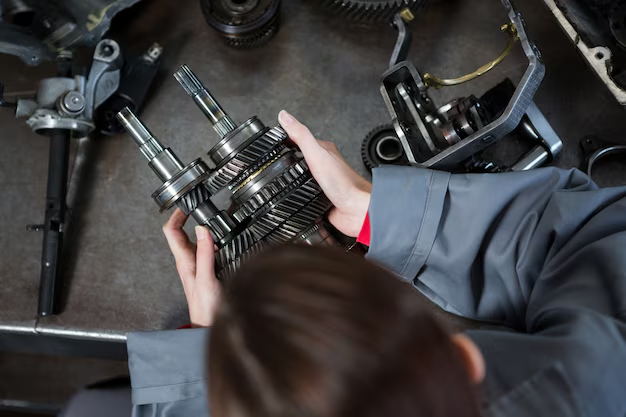1980-1986 Ford F-150 Hydraulic Clutch Conversion Kit
If you own a 1980-1986 Ford F-150 and are dealing with the wear and tear of an aging mechanical clutch linkage, a hydraulic clutch conversion kit might be the perfect upgrade. Hydraulic clutches offer smoother operation, reduced pedal effort, and increased reliability. This guide will provide you with all the essential information on converting your older F-150’s mechanical clutch to a modern hydraulic system.
Why Convert to a Hydraulic Clutch?
- Smoother Operation: Hydraulic systems use fluid pressure to engage and disengage the clutch, resulting in smoother and more consistent pedal feel.
- Reduced Pedal Effort: Mechanical linkages often require more force to operate, especially as components wear out. A hydraulic clutch significantly reduces the amount of force required to press the clutch pedal.
- Increased Reliability: Mechanical clutch linkages can bend, wear, or break over time. Hydraulic systems are more durable, with fewer moving parts that are subject to wear.
- Self-Adjusting System: Hydraulic clutches are self-adjusting, meaning you won’t have to constantly adjust clutch pedal free play as the clutch wears down.
What’s Included in a Hydraulic Clutch Conversion Kit?
A complete hydraulic clutch conversion kit for a 1980-1986 Ford F-150 typically includes the following components:
- Hydraulic Master Cylinder: Mounts to the firewall and converts pedal movement into hydraulic pressure.
- Hydraulic Slave Cylinder: Mounts to the transmission and actuates the clutch fork.
- Hydraulic Lines: High-pressure hoses or hard lines that transfer fluid from the master cylinder to the slave cylinder.
- Mounting Brackets: Custom brackets to attach the master and slave cylinders to your truck’s body and transmission.
- Push Rod and Clutch Pedal Adapters: Adapters to link your existing clutch pedal to the hydraulic master cylinder.
- Reservoir: A fluid reservoir for the clutch master cylinder, often mounted in the engine bay.
Tools and Equipment You’ll Need
- Basic hand tools (wrenches, sockets, screwdrivers, pliers)
- Drill and drill bits (for firewall modifications, if required)
- Brake fluid (DOT 3 or DOT 4, depending on the kit instructions)
- Line wrenches (for hydraulic fittings)
- Bleeding kit (to bleed air from the hydraulic system)
Step-by-Step Installation Process
-
Preparation
- Disconnect the battery to prevent electrical shorts.
- Jack up the truck and secure it with jack stands.
- Remove the old mechanical clutch linkage and components, including the clutch release arm and push rod.
-
Install the Master Cylinder
- Mark and drill mounting holes in the firewall (if required) to mount the master cylinder.
- Attach the master cylinder to the firewall using the provided brackets and hardware.
- Connect the clutch pedal to the master cylinder push rod using the included pedal adapter.
-
Install the Slave Cylinder
- Mount the slave cylinder to the transmission bellhousing using the provided brackets.
- Attach the slave cylinder push rod to the clutch fork.
-
Install the Hydraulic Lines
- Connect the hydraulic line from the master cylinder to the slave cylinder.
- Route the line away from hot engine components and secure it with zip ties or clips to prevent movement or rubbing.
-
Install the Fluid Reservoir
- Mount the fluid reservoir in the engine bay in an accessible location.
- Connect the fluid reservoir to the master cylinder with the supplied hose.
-
Bleed the System
- Fill the reservoir with fresh brake fluid.
- Use a bleeder kit to remove air from the hydraulic system, ensuring smooth operation of the clutch pedal.
- Check for any leaks in the hydraulic lines or fittings.
-
Final Checks
- Test the clutch pedal for smoothness and proper engagement.
- Double-check all connections for leaks, tightness, and proper fit.
- Lower the truck from the jack stands and take it for a test drive.
Tips and Best Practices
- Read the Instructions: Always follow the instructions specific to your conversion kit, as component placement and routing may vary.
- Use Quality Brake Fluid: Use the type of brake fluid recommended by the kit manufacturer to prevent seal damage.
- Check for Leaks: Before final assembly, check all connections for leaks by applying light pressure to the clutch pedal.
- Take Your Time: Modifications like drilling the firewall require patience and precision to avoid alignment issues.
Common Issues and Troubleshooting
- Air in the System: If your clutch feels spongy, air may be trapped in the hydraulic system. Bleed the system thoroughly.
- Leaks: If you spot fluid leaks, check for loose fittings or damaged hydraulic lines.
- Hard Pedal: If the pedal feels too firm, it’s possible the slave cylinder push rod is misaligned or binding.
Conclusion
A hydraulic clutch conversion kit is one of the best upgrades you can make to a 1980-1986 Ford F-150. It reduces pedal effort, improves smoothness, and eliminates the constant adjustments required by mechanical linkages. With the right tools, components, and patience, you can convert your F-150’s clutch system in a weekend and enjoy a more modern driving experience.

